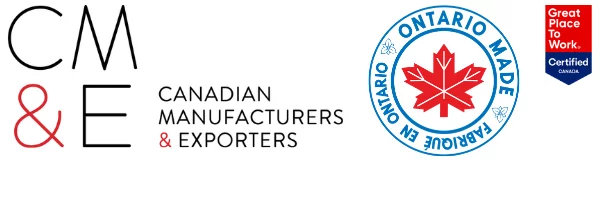FRP PLATFORM
FRP is defined as the composite polymer matrix, which can either be thermostat or thermo plastic, that is combined using a fibre or other different reinforcing materials having a sufficient length to thickness ratio so as to provide a reinforcing function in either one or many directions. It is usually reinforced with fibres such as glass, but sometimes other materials like carbon can also be used to manufacture composite materials. Fibre reinforced polymer is very strong and lightweight and is used in construction. Due to its versatile properties, it has become the top choice for many construction projects. FRP is a performance forward material and is used more than the traditional materials like wood, steel or concrete, which can easily be degraded Fibre reinforced polymer is highly durable and corrosion resistant.
The main ingredients of fibre reinforced polymer are resins, reinforcements consisting of fibres and forms, fillers and additives and modifiers. The main function of the resin is to transfer the stress between the reinforcing fibres. The resins act like a glue and protects the fibres from any mechanical or environmental damage. Glass, carbon, natural and aramid are the four main types of fibres used in the industry. Fillers are used to impart specific properties to the end product. A few examples of fillers are calcium carbonate, calcium sulphate. Additives and fillers are used as they lower the cost of compounds by diluting the resins that are expensive and decreasing the amount reinforcements.
Fibre reinforced polymer is used in a vast range of applications but is most commonly used as a panel, as it can create strong walls and surfaces, which are not only scratch resistant, but can also with stand high impacts. Fibre reinforced polymer is widely used in construction of schools, hospitals and in industrial settings. Apart from being used for walls, FRP is also used for moulding purposes and in different construction applications.
It is manufactured according to your desired colour preference. Painting fibre reinforced polymer is not an easy task, as it involves a lot of preparation. FRP is a combustible material, hence it is not suitable for some applications. It is not always flame resistant and can catch fire depending on which kind of material it is made from. Safety precautions need to be is taken to reduce the risk of fire. In such cases, carbon fibre, which is fire resistant can be a better choice than FRP.

Types of Fibre reinforced polymer
Let’s explore some of the top-notch benefits of FRP gratings that make them a preferred market product.
1. Glass Fibre Reinforced Polymer
These kinds of reinforced polymers are made my mixing silica, limestone, sand and other materials and then heated until it melts at temperature of about 1260°C. The molten glass then flows through holes into a plate made of platinum, where the glass strands are are cooled, collected and then wound. The glass fibres are woven into different forms to be used in composites. The glass fibres have high directional strength. As glass fibre reinforced polymer has high electrical insulating properties and high mechanical properties, they are considered to be one of the predominant polymers being used. Glass FRP has low susceptibility to moisture and has a good impact resistance. However, it weighs more than carbon or aramid.
2. Carbon fibre reinforced polymer
Please kind of reinforced polymers is very strong and lightweight FRP, containing carbon fibres. The carbon fibre reinforced fibre constitutes of a base substance called the matrix and a reinforcing material which is the carbon fibre that is embedded in the base substance. A synthetic resin is used as the matrix material. The properties of the cured composite is dependent on the carbon fibre, the base or the carrier substance and the process of manufacturing. The carbon fibre in carbon fibre reinforced polymer provides the strength, whereas the polymer has the cohesive matrix which protects and holds the fibres together. The materials made of CFRP are rigid, have high strength, low density, are resistant to corrosion and vibration, have high ultimate strain and fatigue resistance as well as low thermal conductivity. Carbon fibre reinforced polymers are non magnetic and are poor conductors of electricity. As carbon fibre reinforced polymer is light in weight, it can easily be transported.
3. Aramid fibre reinforced polymer
Aramid fibres are fibres that contain high strength and are mostly used for bullet resistant and fire resistant clothing. These fibres have high strength and high resistance for abrasion, making them suitable for reinforced polymer and strengthening applications. The aramid fibres are synthetic fibres which contain a long chain of synthetic polyamides which form the fibre. The tensile strength of aramid fibre reinforced polymer is equivalent to that of steel and the traction modulus is almost twice as that of glass.
Why choose FRP over other plastics?
When you include fibres in FRP, it not only reduces the weight, but also improves the elastic modulus as well as the mechanical strength. Due to this, the components made from these materials need high impact tolerance, low fatigue and good compression properties. FRP offers simple component design and operational efficiency as well as great thermal and acoustic insulation. FRPs resist corrosion from chemicals, humidity and storm winds or waters.
Applications of FRP
Fibre reinforced polymers are used in the following areas:
1. Automative industry:
As Fibre reinforced polymers have a high strength to weight ration, they are used as metal substitutes in the bodies of luxury automobiles as well as in the body sidings of trucks and trailers. FRPs have a higher fracture point than that of steel and are strong, stiff and light weight. Due to these properties, they improve the fuel consumption of the vehicle, along with increasing its speed. FRPs can easily be moulded to form desired composers. Glass fibre reinforced polymers are used for components of the engine, like the intake manifold. GFRPs result in the reduction of close to 60% of the weight of he intake manifold, the streamlining the design. A lot of components can be combined, thus reducing costs. Carbon FRPs are stronger and less pliable than Glass FRPs.
2. Construction Industry:
More than 20% of fibre reinforced plastics are used up in the construction field, like bridges and roads. FRPs are added to existing structures like slabs and columns, enhancing their load bearing capacity. These are added to the structures as they can also help repair damage. This proves to be a cost effective solution when old structures are equipped with bearing more loads than they were designed to bear. In the construction field, FRPs are used to manufacture guard rails, drainage systems, auto skyways and pipelines for gas, water and sewage. FRPs are an ideal choice for building houses that are prefabricated. However, for household or business office furniture, swimming pools or pipe fittings, fibre reinforced polymers are already a very popular choice.
3. Aerospace Industry:
Less than 1% of FRPs are used in aerospace applications. The carbon fibres that are present in FRPs decrease the weight by 25%, but when compared to aluminium sheets, they offer higher strength than them. As they offer great tensile strength and can tolerate harsh climate and extreme temperatures, they are an ideal choice to be used in aerospace industry. FRPs are very stiff and have low expansion to heat. Even though the initial cost of FRPs is more, in the long run, it can prove to be a very cost effective solution as in the aerospace industry, even the slightest additional weight can effect the consumption of fuel, length and cost of the journey and the aerodynamic safety. FRPs made of carbon allows for molded part production, which has resulted in the decreasing the number of parts by about 95%, resulting in simpler production, which is faster and cheaper than materials made of steel of aluminium. These days, modern giant aircrafts, helicopter rotor blades are mostly made up of carbon fibre reinforced polymers.
4. Consumer goods:
Due to the use of carbon and other fibre reinforced polymers in sporting goods, it has become very easy for sportspersons to heft their equipment. Close to 6% of fibre reinforced polymers are used in musical instruments, tents for camping and tripods for camera.
5. Protective equipment:
Aramid fibre reinforced polymer produces materials that have high resistance to heat and impact. These materials possess exceptional mechanical strength and are ideally used for bullet-proof and fireproof clothing, and for blast protection vehicles.
6. Marine infrastructure:
In marine environments or ships, FRPs are used in place of wood, as they decrease the weight of the structure and enhance corrosion resistance. Other areas in which FRPs are used are rolling bridges and FRP platforms for sea bases.
7. Power industry:
FRPs are used in the power industry and their growth is expected to grow manifold in the coming decade. As FRPs are insulative and can tolerate corrosive chemicals and even ultraviolet radiation, they are used in electronic and electrical components. Glass FRPs are used in power components are they are non magnetic and are resistant to sparking. FRPs are used in a number of operations like construction of wind turbine blades.

Access Industrial: Top FRP Platform manufacturers
Access Industrial is one of the leading manufacturers of FRP Platforms. We are well known in the industry for giving FRP solutions that are safe, durable and are corrosion resistant. Our FRP platforms are designed and manufactured to give the optimum performance without compromising on any quality. We offer the most competitive and industry-leading prices to all our clients. Our FRP platforms are suitable for waste water plants, sewers and the chemical industry. As the FRP platforms are noncorrosive and non-resistant to chemicals, they are best suited in corrosive environments. Our FRP platforms are very economical and do not require any high cost to maintain.
We offer customised FRP platforms to our clients on their special request. Explain your requirements to our team and we will come up with solutions to help your fulfil all your business needs. A few characterstics of our FRP platforms are as follows:
1. Resistance to Corrosion
Materials like steel can end up wearing down in both dry and humid environments. Our custom fibre reinforced polymer platforms or light in weight and do not rust or corrode, hence becoming an ideal alternative to steel platforms.
2. Durability
As FRP requires very less maintenance, it is ideal for harsh conditions. Unlike steel platforms, which need to be replaced often, FRP platforms are extremely durable and do not require replacement as often as steel platforms.
3. Safety features
Access Industrial’s FRP platforms are fire resistant and can withstand higher temperatures for a longer duration of time without
causing any significant damage to the structure.
4. Easy installation
We can cut, drill and ship the components in custom kits according to your specifications so that you can easily assemble the platform on site. Fibre reinforced polymer platforms can easily be fabricated and installed using standard tools unlike steel.
At Access Industrial, we turn your design idea into a construction solution. We will exceed your expectations and provide to you your project within time. We offer great finished product quality and our unrivalled industry know how helps us to deliver to you a product that is cost effective and performance driven.

